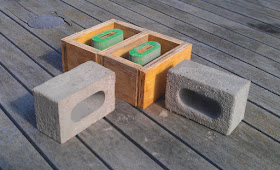This is an excellent case study of what can be achieved to preserve and create Swift nest sites in a sensitive situation Many thanks to Lynda Huxley, Swift Conservation Ireland for forwarding.
Lyons Mill is a landmark historical building in Finisklin in Sligo located just off the town bypass. It is a four-storey mill/warehouse finished in beautiful cut limestone, completed about 1820.
With the decision to build a new LIDL on the site, came the exciting news that the entire Mill building would also be refurbished as part of the project (the new LIDL has been built to the rear of the Lyons Mill site.
The sharp-eyed Will Woodrow of Woodrow Environmental Solutions realised there were Swift nest sites in the building, and a multi-agency collaboration to preserve and improve Swift breeding sites swung into action.
Half-brick nest site entrances were obtained by Swift Conservation Ireland from Action for Swifts in the UK. These half bricks were inserted where ‘traditional’ nest sites were thought to exist and additional ones inserted which means that around 30 Swift nests can now be hosted in the refurbished Mill, a really wonderful outcome. In addition a water proof speaker was inset near the nest site entrances and attraction calls will be played from May to July each year.
Access points and suitable cavities for bats have also been retained.
Sincere thanks to all of the people and organisations who came together to make this happen, in alphabetical order:
Barbara McInerney (Bat Consultant)
BirdWatch Sligo (Micheal Casey)
Carrick Conservation Architects
LIDL Ireland
McCabe Architects (Gary)
McCallion Construction (esp Paul)
National Parks & Wildlife Service (Miriam Crowley)
Sligo Co Council (Siobhán Ryan, Heritage Officer)
Swift Conservation Ireland (Lynda Huxley)
Action for Swifts (Dick Newell)
Woodrow Environmental Solutions (Will Woodrow)
 |
| Lyon's Mill - click to enlarge |
With the decision to build a new LIDL on the site, came the exciting news that the entire Mill building would also be refurbished as part of the project (the new LIDL has been built to the rear of the Lyons Mill site.
The sharp-eyed Will Woodrow of Woodrow Environmental Solutions realised there were Swift nest sites in the building, and a multi-agency collaboration to preserve and improve Swift breeding sites swung into action.
Half-brick nest site entrances were obtained by Swift Conservation Ireland from Action for Swifts in the UK. These half bricks were inserted where ‘traditional’ nest sites were thought to exist and additional ones inserted which means that around 30 Swift nests can now be hosted in the refurbished Mill, a really wonderful outcome. In addition a water proof speaker was inset near the nest site entrances and attraction calls will be played from May to July each year.
Access points and suitable cavities for bats have also been retained.
 |
| 2 entrances and a built in speaker for attraction calls |
 |
| If you look hard enough, you can see 3 entrances |
 |
| The entrances are cast with a 50:50 sand/cement mixture |
Barbara McInerney (Bat Consultant)
BirdWatch Sligo (Micheal Casey)
Carrick Conservation Architects
LIDL Ireland
McCabe Architects (Gary)
McCallion Construction (esp Paul)
National Parks & Wildlife Service (Miriam Crowley)
Sligo Co Council (Siobhán Ryan, Heritage Officer)
Swift Conservation Ireland (Lynda Huxley)
Action for Swifts (Dick Newell)
Woodrow Environmental Solutions (Will Woodrow)
